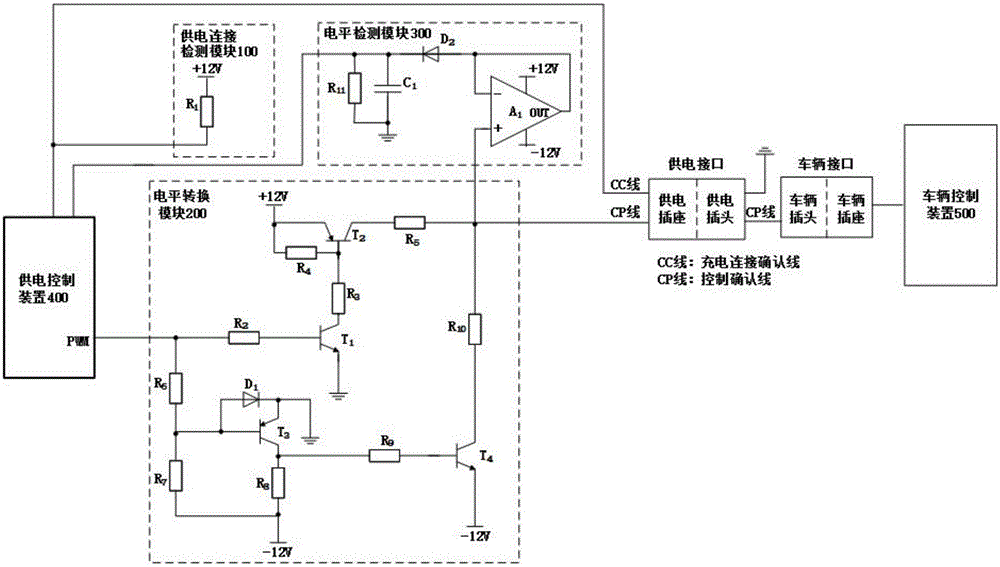Transistor based charge control guide circuit of electric vehicle
A technology of electric vehicles and guiding circuits, which is applied to electric vehicles, battery circuit devices, circuit devices, etc., can solve problems such as unfavorable costs and complex guiding circuits, and achieve cost saving, low price, and peak voltage maintenance.
- Summary
- Abstract
- Description
- Claims
- Application Information
AI Technical Summary
Problems solved by technology
Method used
Image
Examples
Embodiment Construction
[0019] Below in conjunction with accompanying drawing and specific embodiment the present invention is described in further detail:
[0020] Such as figure 1 As shown, a transistor-based electric vehicle charging control pilot circuit includes: a power supply connection detection module 100, a level conversion module 200, and a level detection module 300; wherein:
[0021] The power supply connection detection module 100 is used to output voltage to the power supply control device 400. The power supply connection detection module 100 includes a first resistor R1, one end of the first resistor R1 is connected to the first power supply voltage of +12V, and the other end is connected to the power supply socket It is connected via the CC (Charge Connection Confirmation) line. When the power supply plug is connected to the power supply socket, the output voltage of the power supply connection detection module 100 is 0V; when the power supply plug is not connected to the power supp...
PUM
 Login to View More
Login to View More Abstract
Description
Claims
Application Information
 Login to View More
Login to View More - R&D
- Intellectual Property
- Life Sciences
- Materials
- Tech Scout
- Unparalleled Data Quality
- Higher Quality Content
- 60% Fewer Hallucinations
Browse by: Latest US Patents, China's latest patents, Technical Efficacy Thesaurus, Application Domain, Technology Topic, Popular Technical Reports.
© 2025 PatSnap. All rights reserved.Legal|Privacy policy|Modern Slavery Act Transparency Statement|Sitemap|About US| Contact US: help@patsnap.com

